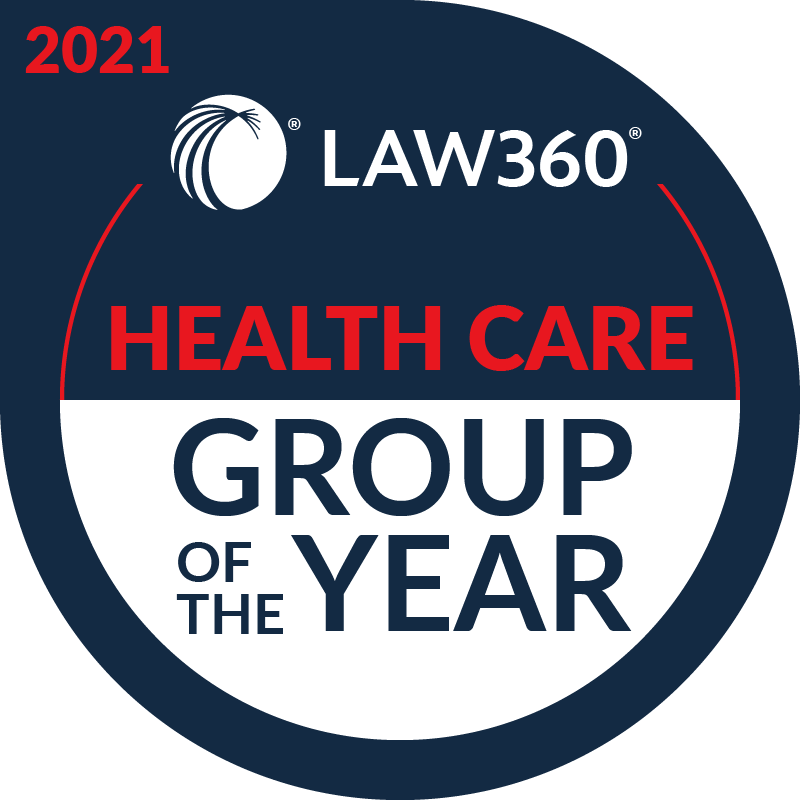During this session, leading private equity investors explored key drivers and trends across diverse industry subsectors. They examined how shifting regulations and the upcoming 2022 midterm elections may alter the deal landscape and mapped out strategies for adapting and thriving amid change. Panelists also offered their exclusive insights into emerging opportunities in health information technology (IT) and forecasted the next evolution of today’s hypercompetitive market.
Below are the top takeaways for McDermott and EY at the 2022 J.P. Morgan Healthcare Conference: Healthcare Private Equity Leaders Forum
Download the PDF here.
From a macroeconomic perspective, the US healthcare market has seen growth through the COVID-19 crisis because of unprecedented government intervention, a significant rebound in consumer spending (although with pockets of softness) and an outlook for historically high nominal growth as COVID-19’s impact recedes but price inflation takes center stage. Although healthcare spending and employment levels have largely returned to pre-pandemic levels, the spread of the Omicron variant poses a threat to this stability, and the labor supply faces serious challenges. Workforce shortages have yielded significantly higher rates of labor cost growth—particularly in post-acute care—helping to drive healthcare inflation. While rising inflation will not necessarily inhibit healthcare deal activity, if corporate interest rates increase, healthcare investments could be affected.
In this current economic environment, investors are paying attention to entities and innovations with the potential to relieve constraints on the healthcare system. Prominent areas of investment opportunity include:
- Care delivery: Digital health innovations and other technologies that help overburdened providers be more productive
- Practice management: Workflow tools and technologies that enable clinicians to practice efficiently and spend less time on administration
- Employee experience, education and retention: Tools that help retain and develop the workforce necessary to support healthcare businesses.
If the 2022 midterm elections shift control of the US House of Representatives to the Republican Party, the Biden administration will have to lean more heavily on its regulatory agenda to accomplish its goals. As a result, the coming year will likely see increased regulatory and oversight focus on both the healthcare sector generally and healthcare investment. To date, the Biden administration has not set overarching themes or guiding principles for its healthcare agenda, instead maintaining a laser focus on COVID-19 amid the ongoing public health emergency. While COVID-19 issues such as testing and vaccine mandates likely will remain the top focus, additional regulatory priorities for 2022 may include Affordable Care Act coverage, telehealth and telemedicine flexibilities, the opioid crisis, health equity initiatives, kidney care and Medicare Advantage and Part D.
Expect to see a high volume of deal activity in the physician practice management (PPM) space in 2022. Established markets such as ophthalmology and dermatology continue to see robust PPM transactional activity. At the same time, newer PPM specialties such as orthopedics, cardiology and neurology are also attracting private equity interest. Healthcare IT is a particularly hot sector, as stakeholders leverage new tech applications to smooth administrative workflows and increase digital engagement. Additional areas to watch include behavioral health, life sciences tools and diagnostics and ventures that promote value-based care.
When evaluating new deal opportunities in 2022, two main issues are likely to be at the forefront of investors’ decision-making. The first, unsurprisingly, is ongoing COVID-19 uncertainty. Conducting scenario analyses will help investors consider potential pandemic-related disruptions and how these disruptions might affect a target or industry. A second important consideration when evaluating new deals will be the ultra-competitive labor market and attendant wage inflation. Determining whether sufficient labor is available in the potential market will be critical. Similarly, investors will likely be very interested in targets’ capabilities and infrastructure around recruitment, training and retention.
An important trend in the pharmaceutical services space is the rise of decentralized clinical trials. Unlike traditional trials, which take place at large health systems and academic medical centers, decentralized trials radically increase the number of places where data can be collected. Being able to collect data from the convenience of a patient’s home or a community physician’s office, for example, can accelerate trial recruitment and increase retention. This in turn can shorten the overall length of the trial. However, increasing the footprint for data collection raises risks related to data integrity. As decentralized clinical trials become more common, there is growing opportunity for technology and service providers to help improve data collection practices.
On the manufacturing services front, the cell and gene therapy contract and development manufacturing organization market continues to see intense investment interest and record valuations. Cell and gene therapy manufacturing demand is high while capacity remains scarce, resulting in long lead times and intense competition among biotech companies. Investors looking to engage in this hot sector may need to be more creative in how they source opportunities. For example, investors are increasingly exploring earlier stage investments, facility build-outs and development support services that extend beyond pure play manufacturing.
To catch up on all of the sessions at the McDermott and EY at the 2022 J.P. Morgan Healthcare Conference, please click here.






